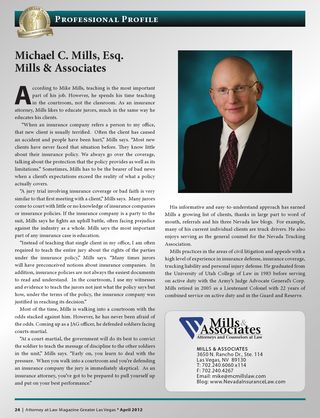 The 2015 Nevada Legislature increased the state courts’ jurisdictional limits. Assembly Bill 66 saw the jurisdictional limit in small claims increase from $7,500 to $10,000. That change took effect on October 1, 2015. NRS 73.010.
The 2015 Nevada Legislature increased the state courts’ jurisdictional limits. Assembly Bill 66 saw the jurisdictional limit in small claims increase from $7,500 to $10,000. That change took effect on October 1, 2015. NRS 73.010.
The same bill increased the jurisdictional limit of Nevada’s Justice of the Peace courts. Since 2003, the jurisdictional limit had been set $10,000. Assembly Bill 66 increased the jurisdictional limit to $15,000. NRS 4.370 (1). These changes take effect on January 1, 2017.
Changes to the Justice Court’s jurisdiction automatically affect the jurisdiction of Nevada’s District Courts. Article 6, section 6 of the Nevada Constitution states that “[t]he District Courts in the several Judicial Districts of this State have original jurisdiction in all cases excluded by law from the original jurisdiction of justice’s courts.” (Emphasis added.) Thus, in situations where the Justice Courts have jurisdiction, the District Courts do not.
The obverse is true as well.
The Nevada Supreme Court held in Royal Ins. v. Eagle Valley Construction, Inc., 110 Nev. 119, 867 P.2d 1146 (1994) that the Justice Court has exclusive jurisdiction under NRS 4.370 when the damages claimed are less than the monetary limitation. The Court also held that attorney’s fees and costs are not included in calculating the jurisdictional limit. Hence, even if adding attorney’s fees and costs could potentially bring the judgment over the jurisdictional limit, the Justice Court would still be the only court with jurisdiction over that matter.
Furthermore, the District Court is not permitted to waive the minimum jurisdictional floor. If the District Court were to hear a case that belongs in Justice Court, any decision would always be subject to an argument that the court lacked jurisdiction. An argument of lack of jurisdiction can be raised at any time during the proceedings, and in almost any manner. Meinhold v. Clark County School District, 89 Nev. 56, 59, 506 P.2d 420, 422 (1973); S. G. & R. Bank v. Milisich, 43 Nev. 373, 390, 233 P.41, 46 (1925); Phillips v. Welch, 11 Nev. 187 (1876). The Plaintiff would not be allowed to argue that the Defendant waited too long to file its Motion for Lack of Jurisdiction.
When this change kicks in, how will it affect your practice? Will the change be good or bad? The Nevada Law Blogs are interested in what you think will happen. Please post your comments below and we’ll follow up with another post to discuss the most anticipated or feared changes.
In the meantime, if you have questions on Nevada insurance, bad faith or trucking law, please be sure to contact Mike Mills at Bauman, Loewe, Witt & Maxwell, 702-240-6060. Or send an email to mmills@blwmlawfirm.com
 Follow
Follow Email
Email


